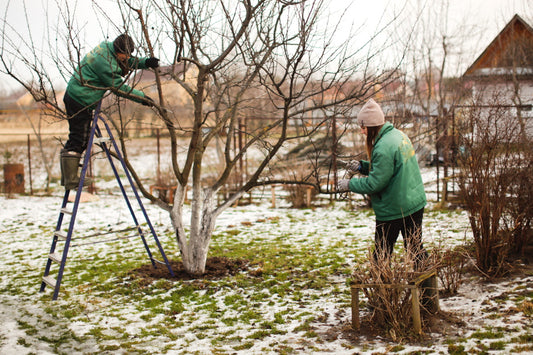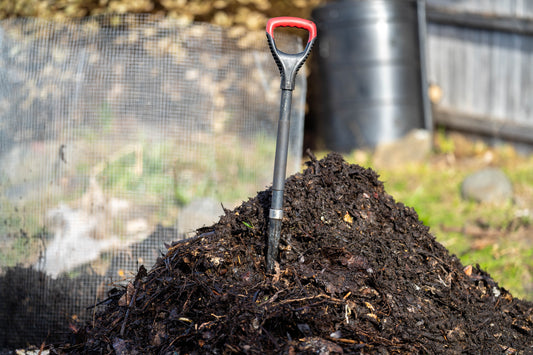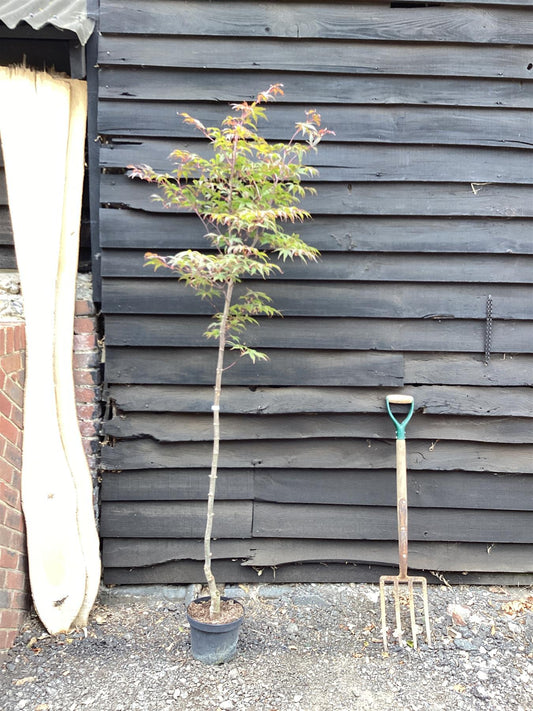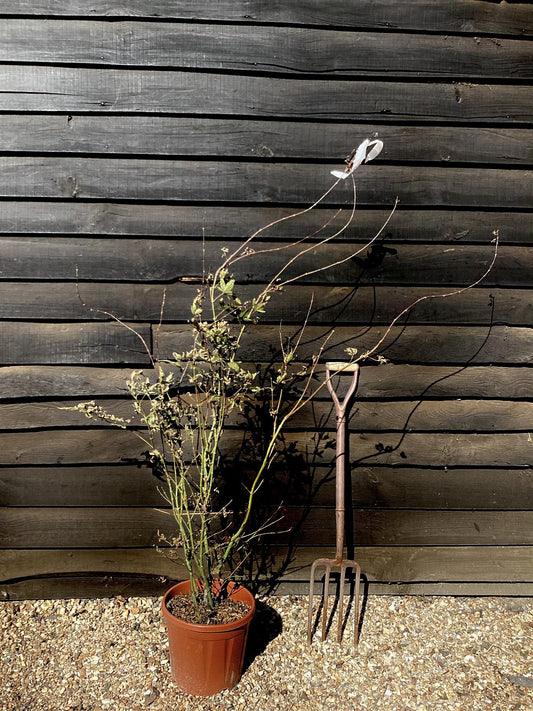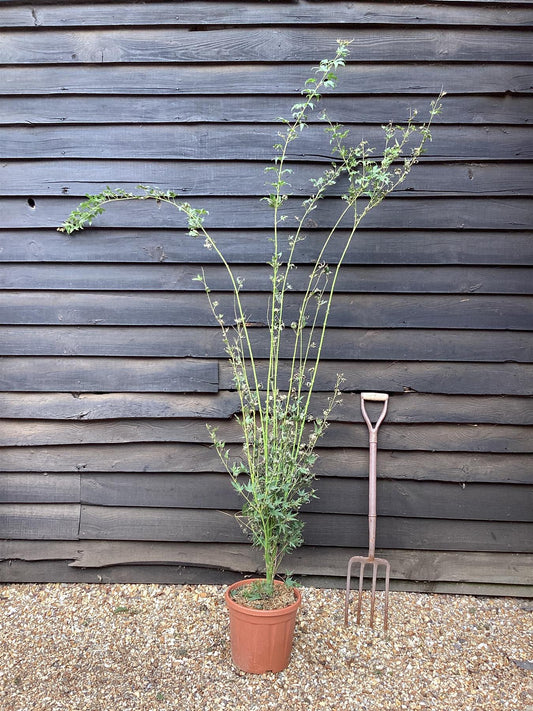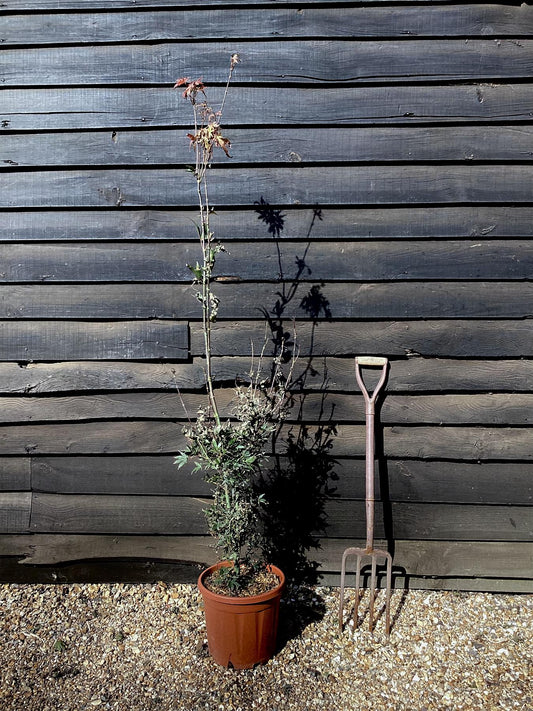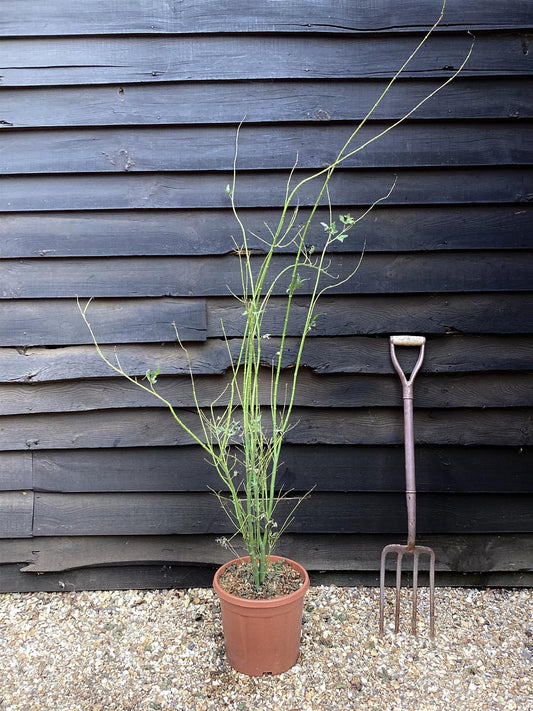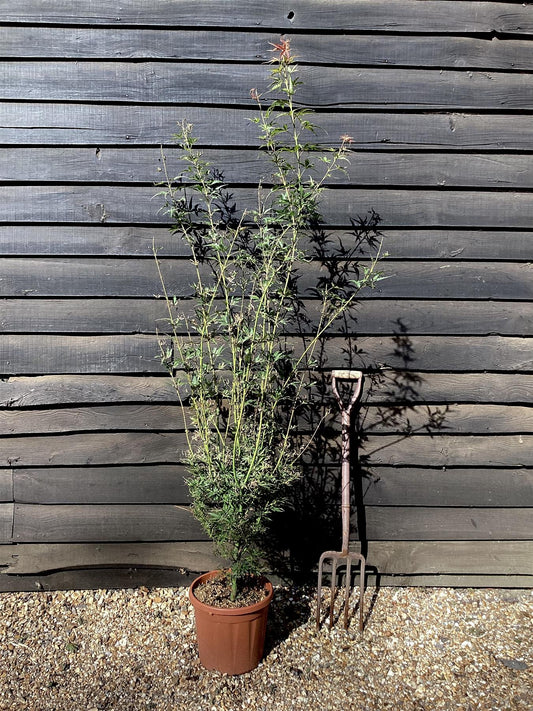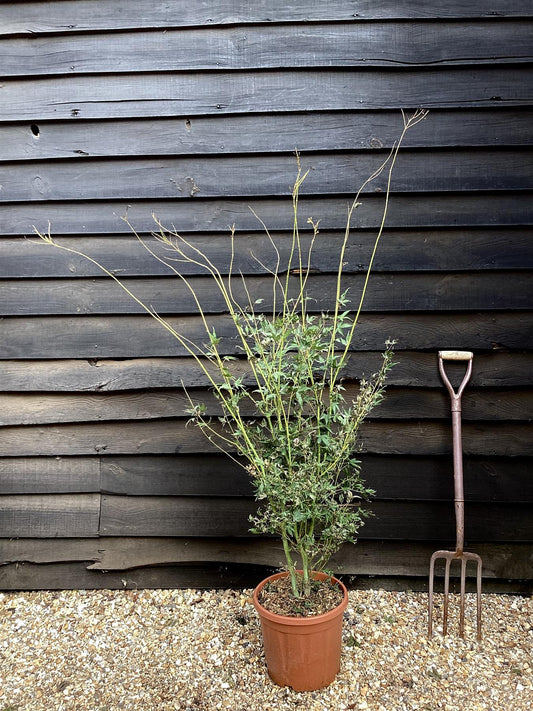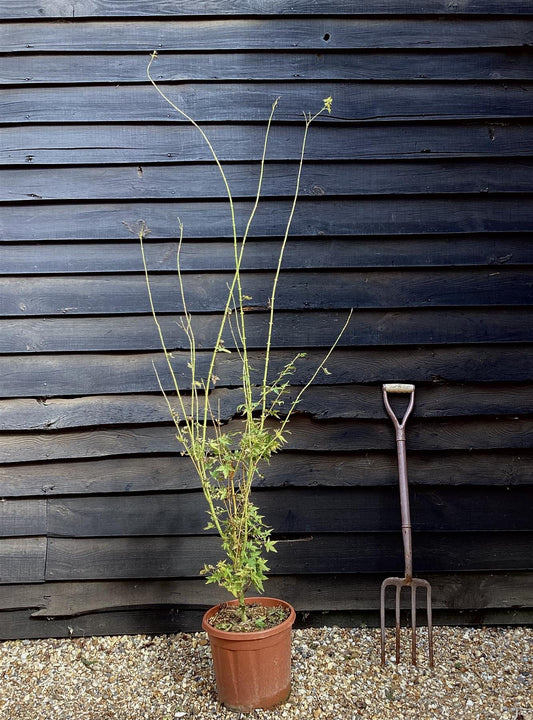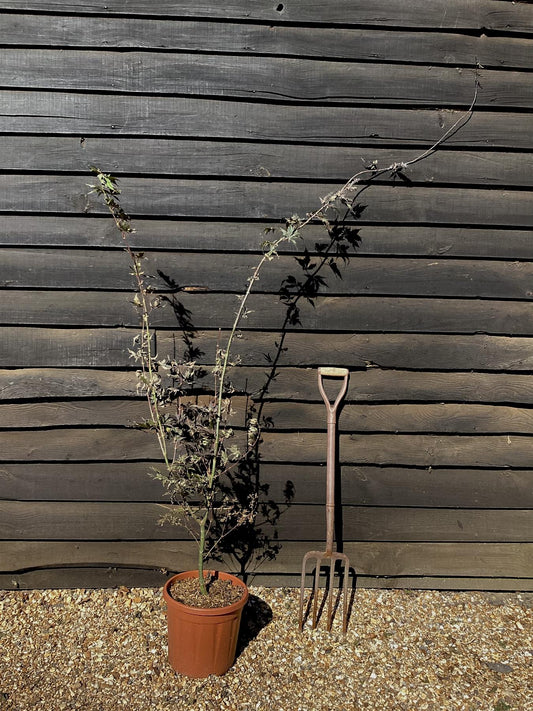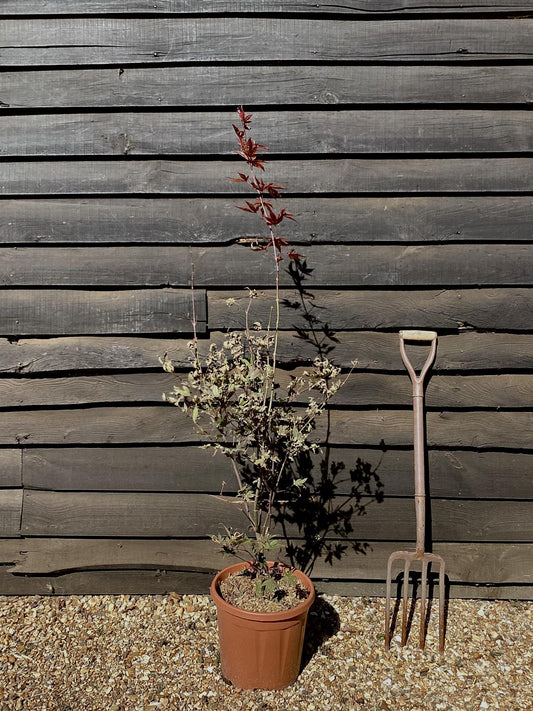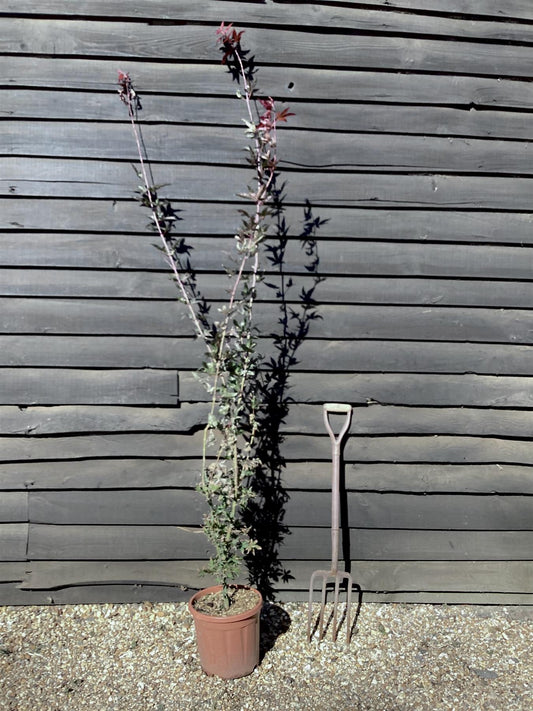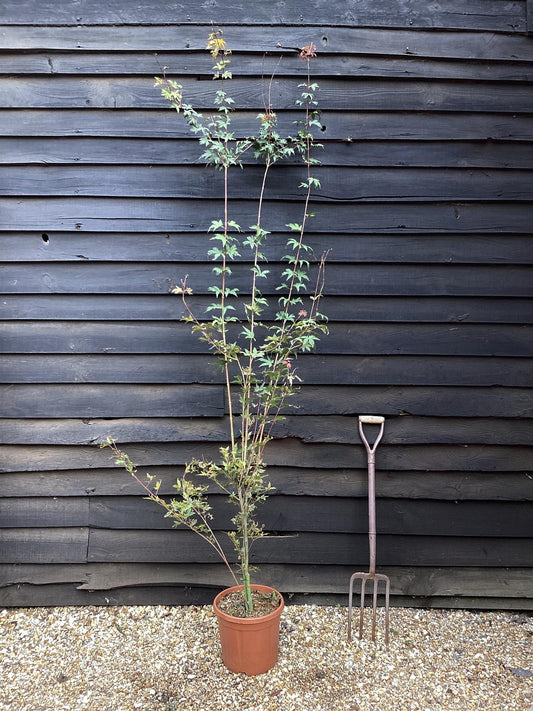Purchasing a tree for your garden is an investment and there are many practical considerations to take into account, especially if your purchase is a small tree for a small garden. Some of the important factors to consider are:
- Height and Spread – this is probably the most important factor to consider. Books will often give you the final height of a tree, but however they do not always explain that it may take 60 years to get there! You must give full consideration to the amount of space you have – height and width. If you do not have room for the tree to spread, you can consider a columnar tree e.g. Prunus ‘Amanogawa’; Liriodendron fastigiata; Cup. Sempervirens Totem.
- Interest – when would you like your tree to look its best? You should consider when the tree will flower, the size and shape of the foliage. Does the tree fruit, and what are the autumn colours like?
- Deciduous or evergreen – both trees have their advantages. Evergreens will keep their leaves all year round, thus providing a degree of privacy. However, many deciduous trees have spectacular autumn colours, e.g. Crataegus persimilis ‘Prunifolia’ which you would not get with an evergreen tree.
- Location – is the area where the tree is to be planted wet or dry? Shady or sunny? These options will have a contributory factor on your final choice.
To help you choose, you may like to consider the following:-
Amelanchier canadensis
Amelanchier canadensis is a dense, erect, deciduous small tree. Its eventual height can be in excess of 14’. It has mid-green leaves, which change to red-orange in the autumn and racemes of white, slightly fragrant flowers from April-May that are followed by green-red fruit in the summer. The Amelanchier is suitable for most soils, but it is best to avoid chalky sites. It will thrive in sun and partial shade.
Crataegus persimilis ‘Prunifolia’
Crataegus persimilis ‘Prunifolia’ is a variety of Cockspur Thorn. In our opinion, it is one of the most attractive of all thorns. It produces green, glossy leaves turning a blaze of orange\red\yellow in the autumn. Masses of white flowers appear in May, followed by bunches of large, rich, red fruit from autumn onwards. It’s a small tree that can stand heavy pruning, and is an exceptional wildlife tree- the ideal tree for nesting birds as the large thorns deter cats and squirrels from climbing the tree and disturbing the nests. A very hardy tree – “as tough as old boots”. It can withstand north, south, east or west positions and clay to chalk soils.
Malus ‘Evereste’
Malus ‘Evereste’ is a small deciduous tree which is broadly conical in shape. It has an eventual height of approximately 16’. Its large soft pink to white flowers emerge from scarlet buds in April and May and dark green leaves, which turn yellow in the autumn. It produces yellow-orange fruits that can be used for culinary purposes and if left on the tree, will often last until after Christmas. Malus ‘Evereste’ is great for wildlife, and is especially a hit with the bees. Also it can withstand north, south, east or west positions and dry ground.
Prunus ‘Amanogawa’
Prunus ‘Amanogawa’ is a small, narrow column tree, with upright branches. It is ideal for a small garden, with an eventual height of approximately 19’. In April, it produces clusters of large fragrant single or semi-double shell pink flowers. The foliage is bronze-green in the spring, turning to mid-green during the summer and orangey/red in the autumn. Prunus ‘Amanogawa’ is very tolerant of pollution, so is an ideal tree for urban areas. It can withstand south and west positions however needs dry ground – alkaline to clay for best results.
Olea europaea – half standard
Olea europaea is an evergreen tree ideal for a small garden. It will have an eventual height of approximately 19’ and a spread of approximately 16’ but can withstand hard pruning. This should be undertaken in the spring, when you are sure to have seen the last of any frosts. Olives are hardy and can cope with temperatures down to -10 and sometimes more. They are very easy to maintain and make ideal plants to keep in containers. However, they must have good drainage, so if planting in a container, add grit to aid drainage. They love to be situated in full sun but can also tolerate a windy position, although they should be protected from salt winds. Olive trees when planted in a bed will make a fantastic feature tree, as it will create height and interest to the bed.
At Arundel Arboretum, we are always very happy to assist our customers with our extensive knowledge of trees for your garden. Please do visit us to see the variety of small trees we have available for small gardens.


